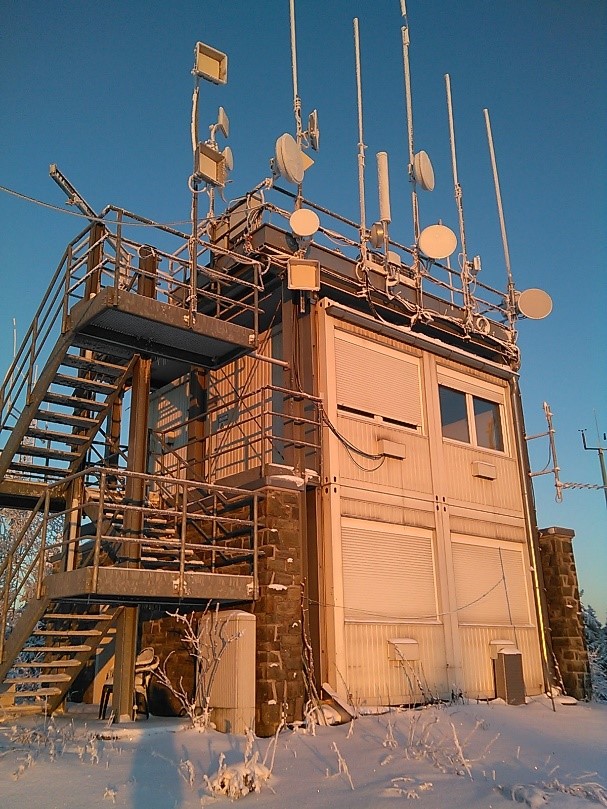Measurements of Source Gases of Stratospheric Chlorine and Bromine at Taunus Observatory
 Ozone-depleting chlorine and bromine reach the stratosphere mainly from source gases emitted by human activities, such as bromine containing halons used in fire extinguishers or chlorinated cooling agents in mobile air conditioning. The Montreal Protocol regulates the use and production of many of these substances. In consequence, replacement substances are now emitted into the atmosphere instead. Our group observes the temporal evolution of atmospheric mixing ratios of a wide range of halogenated gases at Taunus Observatory.
Ozone-depleting chlorine and bromine reach the stratosphere mainly from source gases emitted by human activities, such as bromine containing halons used in fire extinguishers or chlorinated cooling agents in mobile air conditioning. The Montreal Protocol regulates the use and production of many of these substances. In consequence, replacement substances are now emitted into the atmosphere instead. Our group observes the temporal evolution of atmospheric mixing ratios of a wide range of halogenated gases at Taunus Observatory.
Taunus Observatory is situated 20 km northwest of Frankfurt at 825 m.a.s.l. on the mountain Kleiner Feldberg in the Taunus mountain range. It is remote of local sources and therefore allows measurements representative of a wider region. Both, unpolluted background air masses as well as regional anthropogenic emissions are measurable at the site.
The time series of atmospheric mixing ratios started in October 2013. Since then, air samples are collected in canisters at Taunus Observatory weekly, followed by subsequent laboratory analysis at our institute. In late 2017, a system for continuous measurements was installed at the site. With this permanently installed setup air is sampled and analyzed in situ several times per day, the higher temporal resolution allowing more detailed data analyses as before.
The main objective of these higher frequency measurements are better estimations of regional emissions of halogenated hydrocarbons. In addition, changes in atmospheric mixing ratios of new replacement substances, such as the new hydrofluoroolefines used in mobile air conditioning, are monitored.



